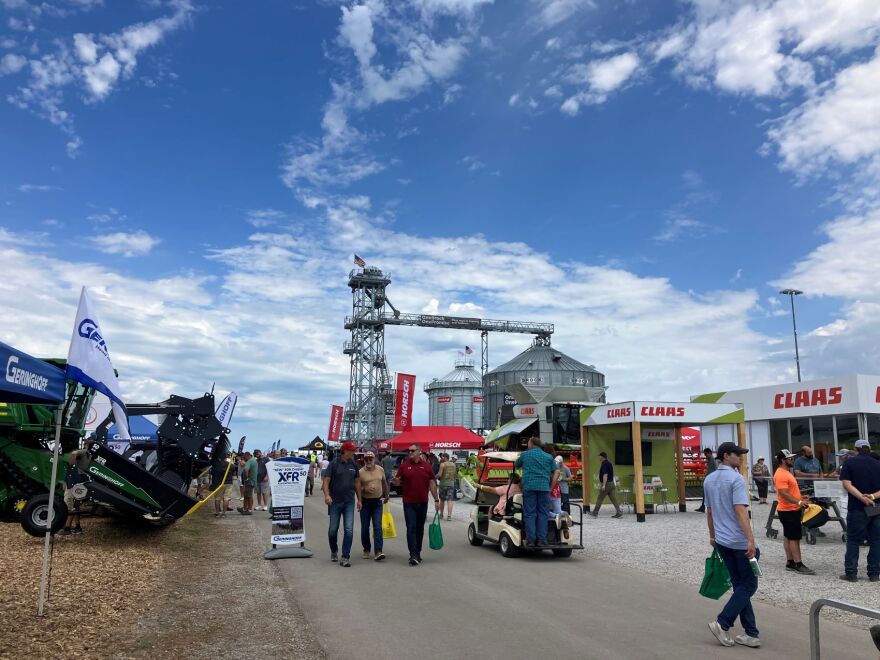U.S. Secretary of Agriculture Tom Vilsack announced the next phase for a bird flu vaccine for dairy cows and more funding to expand domestic fertilizer production at the Farm Progress Show in Boone Wednesday. The former Iowa governor also discussed the U.S. Department of Agriculture's forecasts for a downturn in on-farm income for 2024.
Vilsack said several companies have been working on H5N1 vaccines for dairy cows. The USDA authorized one of these to move into the field trial stage, which began this week. He said the USDA’s Center for Veterinary Biologics in Ames is overseeing that process.
Since March, the virus has been confirmed in nearly 200 herds across 13 states, including Iowa.
"If you don't pay attention to animal health, you're eventually going to have to pay attention to people health,” Vilsack said.
While dairy cows typically recover, H5N1 is highly contagious and lethal to chickens and turkeys. According to the CDC, four people have contracted the virus from sick dairy cows and nine people this year have gotten sick from handling infected chickens.
Vilsack said more publicly funded research is needed to prepare for and respond to livestock diseases.
"We invest a lot of money in healthcare research in this country, tons of it, millions, billions of it. And we beg, borrow and steal for ag research money,” Vilsack said.

Investing in domestic fertilizer
Vilsack also announced $35 million for seven new projects that are part of the Fertilizer Production Expansion Program.
Grants ranging from more than $776,000 to $11.77 million went to companies in Iowa, Wisconsin, California, New York, Oregon, Tennessee and Virginia. The funds can be used to modernize equipment, build production capacity and adopt new technologies, and build production plants.
Quality Flow Environmental LLC in Maquoketa received a $4.7 million grant to create a thermochemical manufacturing facility to convert dairy waste into fertilizer.
Vilsack said investing in Fertilizer Production Expansion Program projects reduces reliance on other countries and can help lower costs for farmers. He said they can also unlock new ways to understand where, when and how to use this input.
"We know that there are a lot of acres out there that, probably, we may be over fertilizing as we develop sensor technology and information. We can do a better job of the fertilizer that we have,” Vilsack said.
To date, the USDA has invested $286.6 million in 64 projects across 32 states through the Fertilizer Production Expansion Program. Vilsack said more announcements will be made in the coming months.
Fertilizer prices more than doubled between 2021 and 2022, partly due to supply disruptions with the war in Ukraine and a lack of competition in the fertilizer industry, according to the USDA.
Farm income expected to dip this year
The USDA is predicting a roughly 25% dip in on-farm income for 2024.
"When we see farm income numbers, we have to understand that it doesn't necessarily translate to every farmer,” Vilsack said.
The three-year stretch from 2021 to 2023 generated some of the highest farm incomes in the last five decades. But, Vilsack said, roughly 85% of that income went to less than 8% of the 1.9 million farms in the U.S.
Vilsack said a farm bill can put a "safety net in place" for farmers when their yields and prices are down.
"The problem with that is that the structure of those programs also disproportionately helps those larger farms," he added.
He said the USDA is working to do more to support small and mid-sized farms. Vilsack gave the example of nearly a billion dollars in funding for over 180 livestock processing facilities across the country. He also talked about investments to expand ethanol blends and local food purchasing agreements with schools and food banks.






